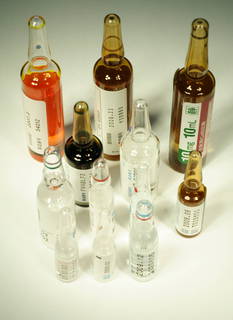More than three million notifications on the classification of chemical substances in line with new EU rules have been received by the European Chemicals Agency (ECHA).
 More than three million notifications on the classification of chemical substances in line with new EU rules have been received by the European Chemicals Agency (ECHA). All companies manufacturing or importing hazardous substances were required to classify them by 1 December 2010 and notify ECHA by 3 January 2011. Classification is essential to determine whether a chemical is dangerous for health and the environment, and will determine the information on the labels of chemicals that workers and consumers use. The new rules are laid down in the EU Regulation on Classification, Labelling and Packaging of chemicals (CLP) which aligns the EU classification system to the UN Globally Harmonised System, ensuring that the same hazards are described and labelled in the same way all around the world. The data will enable ECHA to establish the first European inventory of hazardous substances and harmonised classifications.
More than three million notifications on the classification of chemical substances in line with new EU rules have been received by the European Chemicals Agency (ECHA). All companies manufacturing or importing hazardous substances were required to classify them by 1 December 2010 and notify ECHA by 3 January 2011. Classification is essential to determine whether a chemical is dangerous for health and the environment, and will determine the information on the labels of chemicals that workers and consumers use. The new rules are laid down in the EU Regulation on Classification, Labelling and Packaging of chemicals (CLP) which aligns the EU classification system to the UN Globally Harmonised System, ensuring that the same hazards are described and labelled in the same way all around the world. The data will enable ECHA to establish the first European inventory of hazardous substances and harmonised classifications.
European Commission Vice-President Antonio Tajani, Commissioner for Industry and Entrepreneurship said: "The first inventory of all hazardous substances in the EU will ensure that all companies – including small businesses - and consumers will have the necessary information for the safe use of chemicals. I am proud that Europe is a frontrunner and that together with REACH, the CLP Regulation will foster the sustainability and competitiveness of the European chemicals industry."
Janez Potočnik, Commissioner for Environment said: "The publication and harmonisation of classifications will improve safety for all those handling chemicals and will enable downstream users and consumers to select less hazardous chemicals for their needs".
Companies placing substances on the EU market had to meet the requirements of the new Regulation on Classification, Labelling and Packaging (CLP Regulation No 1272/2008) from 1 December 2010. Manufacturers and importers had to notify the classification of substances to ECHA by 3 January 2011. 3 114 835 notifications were submitted to ECHA by the deadline.
Substances and mixtures have to be classified in specific hazard classes and categories and labelled with appropriate hazard pictograms, signal words, hazard statements and precautionary statements. This is important to ensure that information is passed on appropriately to all users of substances and that equal protection levels are ensured.
The aim is to make the information about the hazards of substances available to all stakeholders. Based on the information received, ECHA will publish a Classification & Labelling Inventory in the coming months. In the event that different classifications have been notified for the same substance, the companies concerned will have to agree an entry. This will eventually lead to harmonised classifications for all hazardous substances placed on the EU market.
Given that there are no tonnage limits for submitting notifications – unlike the registration obligations under REACH (Regulation No 1907/2006 for Registration, Evaluation, Authorisation and Restriction of Chemicals) – many more companies were affected by the notification obligations under CLP, notably small businesses.
Manufacturers and importers that place hazardous substances on the market for the first time after the deadline must notify the classification to the ECHA within one month.